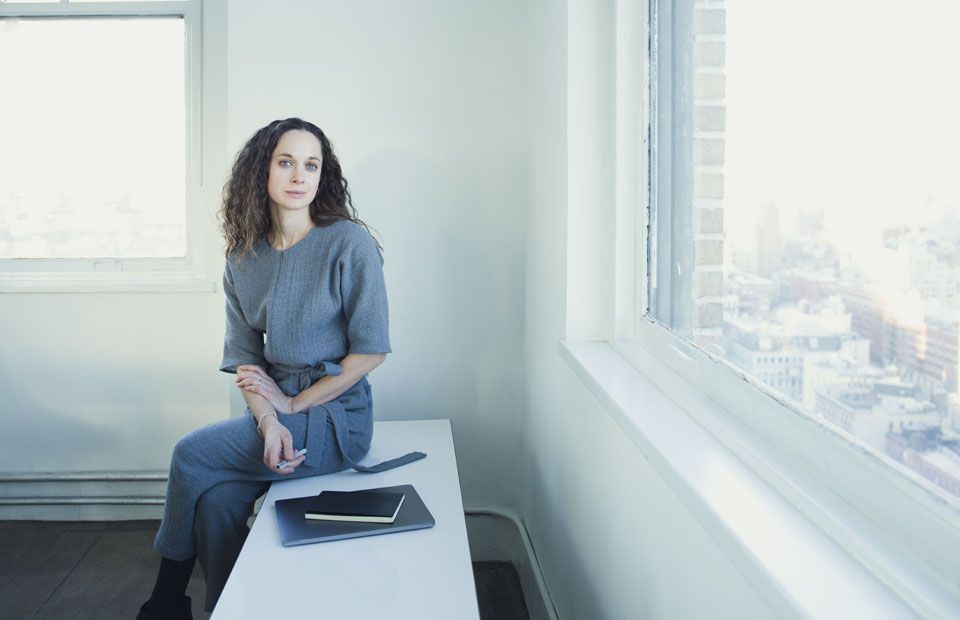Before I hopped on a call with Marina Cashdan, I'd read her. There was her 2016 Letter from the Editor on how the future of digital media could be summed up in one word: quality. There was her piece, "You Can Be a Successful Mother and Still Be an Artist," in which, as a mother herself, she interviewed artists about their own experiences with working motherhood and stigma in the art world.
Clearly, as the online art database, Artsy's Head of Editorial and Creative Director, Cashdan has more than a few words to say—and write—about the current cultural and media landscapes.
It's not often that I get to interview a woman who's landed in a role much like mine (digital media, editorial, startup), and so selfishly, I wanted to know it all—the industry secrets, her secrets, all the secrets. This was a "Can I pick your brain?" moment of a lifetime.
But by the time we'd hung up, it was clear Cashdan's insight wasn't limited to our industry. This is a woman who spends her days thinking about art and movements—and considering how we can tell smarter stories about culture and each other.
What her words below don't convey, though, is almost more telling: As Cashdan spoke, she weighed her words carefully, considering all sides before speaking. Even in an interview, she's focused on creating quality content.
Note: This interview has been edited for length and flow.
I’ve always been a writer. Since I was a child, I've always written things down—I had loads of journals, I even remember early on (my dad actually reminded me of this) putting together magazines around certain themes or subjects—it might be “colors". I'd put together something in collaboration with friends who had similar interests—they were always very visual projects beyond the words and stories. So it was definitely something I was interested in from childhood.
[In high school,] I was certainly more focused on English literature and art than math and sciences, so I knew that was the general direction I wanted to go, but I was also dancing seriously at the time—I had a scholarship with a contemporary dance company—and so I tried to find a university setting that would support both of those things. New York City was the best for that, which is funny because I grew up in New York, so I didn't go very far from home. I wound up at Barnard [College] as a Literature major and a Dance minor, so I could continue with dance companies while also working on my degree.
I think one of the most impactful experiences in my time there, which helped me set my course, was becoming a writing fellow. I applied to become a fellow at the Erika Jong Writing Center at Barnard which serves all the university, so the undergraduate and graduate students at all the schools at Columbia University, including Barnard. It was an intensive and soul-searching application in many ways, but I felt like my writing would grow and get better as I learned to work with writers on their writing—and edit their writing—and also learned about the pedagogy around writing. That was a huge moment of clarity in terms of what I wanted to be doing. It got me excited about writing and journalism as a career path.
On Her Name in Print
While I was still in school, I started working at a then brand-new publication, which was kind of underground at the time—it was a magazine called Nylon. It was early days there, so I was sitting next to Marvin Scott Jarrett, the guy who founded it, in a loft on West Broadway. It was an open setting, very collaborative and very scrappy in a lot of ways, but also artistic. Learning the whole process of production in editorial, that was another milestone for me. That's what set me off [in the direction of] magazines and print publications.
Back then, and this probably ages me, online publications weren't really around. There were little blogs, but there weren't digital publications. Online writing wasn't as prevalent then. So magazines were where I started. But every milestone I hit and every revelation I had in terms of where I wanted to go ultimately got me closer to digital and the possibilities of digital storytelling, especially as the functionality and features and design started improving by leaps and bounds.
I was mostly writing about culture and art and honing in on a niche—which became contemporary art—and writing for a lot of publications including T Magazine, FT, and Wallpaper*. And I just continued to refine my voice and style. Now, I go back to my writing 10 or 15 years ago and cringe, but that's all part of the process.
On Landing Full-Time at an Arts Publication
So, yes. I had been writing a lot about art—or culture first and then, more specifically, about contemporary art—in the years leading up to Modern Painters. And so when they were looking for an executive editor, the woman who [would become my boss,] Marisa Bartolucci, and who was overseeing all the [Louise Blouin] publications at the time, interviewed and hired me for the position.
They were in a really tough spot. I mean, I think this information is out there, but the staff had all left, and they'd had a lot of financial difficulties. The atmosphere was a challenging one, so I went in there for about a year or so to try to shift the positioning—well, not the position, but at the time Louise Blouin wanted Modern Painters to have a broad interest side. And while I'm not sure that was the best strategy in the end, it was an interesting and fun exploration of that.
And while the company was in shambles, to be honest—you know, it's difficult when you can't get your writers paid and your hands are tied or when you just don't have the resources—we also had such an incredible group of editors who managed to do a lot with a little. So I cherish those relationships even though the work environment was pretty toxic. And then, eventually, there was a change of guard, and it was a very different environment and mentality, and so I felt it was best to go freelance again.
On Exploring a New Kind of Art World
Even in freelancing, I still found myself in the art world. You meet so many interesting people through the interview process, and I had wound up interviewing on many occasions a graphic design duo called MM Paris. They'd done all the graphics for Björk's albums and worked with Givenchy, but they also do a lot of work with artists. So they asked me to work with them in building their art presence in New York City and on some art-specific projects here. That was an interesting departure for me from editorial proper, and it was also my first—and only at this point—foray into consulting. But I loved what they did and felt it was something I could help them with.
At that point—somewhere around there—I was having a drink with a friend who was a gallery director, and I was talking about how limiting I felt writing around art was and how often inaccessible and unfriendly it was and how it, unfortunately, lacks visuals and stories. (Laughs.) It was such a missed opportunity in art writing. We started talking about that and bringing art writing into more mediums, like video and visual experiences and multimedia features, and she said, "You have to meet this guy, Sebastian Cwilich, who started this company called Artsy." She mentioned that they were looking to start building out their database with words and content.
So that was where it all started. I met with Sebastian and started at Artsy in 2011. That was the point where I turned fully toward writing for digital.
On Building an Editorial Team from (Almost) Nothing
I wanted to be with a team that was building a new platform. The first two years at Artsy were really about building the database, and then about three—or three and a half—years ago, we started investing in the publication that's under the Artsy umbrella. The database allows you to research and inquire and buy work to now bid on auctions, etc. But this editorial component, which is separate in terms of any influence from any commercial or partner relationship, has become its own voice within Artsy. That independence has been a great thing for us as a brand and great for us editorially, too, because as Artsy’s become more and more ubiquitous in the art world, the editorial has gone hand-in-hand.
The whole foundation of the publication was built on quality. It was, I have to say, a challenging time [to do that] because it was during the Upworthy, Buzzfeed, Vice mania when people were just pushing out stories—and to me, that wasn’t aligned with our values as a company and the idea of the quality of art and being aligned with art. So, thankfully we had the support of our CEO and COO to invest in high-quality content. We wanted to both focus on the words and commission photos and the types of things that will set us apart and are aligned with the beautiful experience we’ve created throughout the site.
I was able to build and develop a team based on this idea of going back to quality. I think that's really happening more now everywhere So I’m grateful I pushed for and got support for that, it was the best possible strategy for the long-term, both for Artsy editorial and Artsy the brand.
On What's Next
I’m most excited about my team and their growth and also their roles becoming more and more defined. We’ll be hiring some more people this year. We’re setting our mission—this is one of the things we’ve been working on for a long time—[along with] our vision and values.
I’d say we’ve entered the adolescent phase for editorial. We’re growing up. We’ve still got our roots and our soul, but in a more grown-up way. I’m excited for the definition. The refinement. I want to feel proud, wherever I am ten years from now, that I was a part of this.
Photos by Antony Crook.
Walk us through your average day.
While there is no true “average” day, my days, more often than not, go as such:
6:30am: Alarm goes off. If I’m good, I’ll get up. If I’m not, I’ll hit snooze, probably twice until around 7am when I hear my two-year-old son call, “Mama, I’m awake,” which is usually how he greets us in the morning. If my son wakes up earlier than 6:30am, it’s usually to crawl into bed with us, which I can’t say isn’t a nice way to wake up—snuggling.
6:45am: I try to exercise at least two days per week. If it’s an exercise day, I’ll run or take a pilates class in my neighborhood. I’ll get out of the house by 6:45-7am. Then my husband will make our son breakfast and get him ready for school.
7:30/8am: This is usually the time where I’ll be doing one (or more) of these things: (1) making my son breakfast, which is usually oatmeal with fruit; or, (2) this could be the time when I’m getting home from a run or class and I shower and get ready while my husband is in charge of making our son breakfast, dressed, and ready for school. Or, (3) this time could be dedicated to a message or email I need to reply to before I head to work.
8:30am: Depending on who is taking our son to school, we leave the house by 8:30am to get there on time. It starts at 9am and is about 25 minute walk from our house. The reality is we usually leave for school around 8:40. If I’m on school drop-off and we do get out on time, I stop by our favorite bread shop Bien Cuit on Smith Street and indulge in a croissant or bread, which my son and I share, and as long as the weather is good, I enjoy the walk and fresh air.
9am: I drop my son at school and usually stay a few minutes then head off to work. On my walk to the subway and on route to work, I typically listen to the New York Times’s Daily podcast hosted by Michael Barbaro. While I have to take a break from it at times—it’s often hard hitting—it’s well produced and varies in both daily news but also human interest approach to world events. Other times, I read one of the books I’m trying to get through or get some thoughts down on my notebook or the notes section on my phone, dependent on where it will end up.
9:30-10am: I try to get into work with at least 30 minutes to have my second (small) cup of coffee and catch up on email before the day hits.
10:30am-5pm is usually packed with meetings, except Fridays when I try to block off morning time for long-term planning. When we’re in the midst of production or pre-production for a project there’s often a lot to juggle on top of the day to day of my job and managing a team.
I don’t often leave the office for lunch, except if I have arranged a lunch meeting, which can be a nice way to both get work done and enjoy lunch together with a colleague. My favorite go-to lunch meeting spot is a poke place just around the corner from the Artsy HQ, called Humble Fish.
5:45pm: I block my time from 5:45pm onward so I can leave by 6pm to get home and relieve my son’s babysitter who leaves at 6:30pm. She has been an important part of our ‘village’ in raising our son; I am so grateful for her. She typically feeds him at 6pm, so I miss dinner time on weekdays, but I usually get home in time to give him a bath.
6:30-8pm: Bath, books, and bedtime with our son. Depending on whether my husband is traveling (he travels a lot for work), we tag-team on bath and bed. It’s some of my favorite time with my son—he likes to tell me about his day and we read books.
Usually by 8:30pm he is asleep. Then my husband and I have dinner together, or a light dinner ‘snack’ like avocado on toast, or the like. We don’t tend to eat heavy dinners during the week.
8:30/9pm: I admittedly jump on email after dinner to get some more work done. This is a time where I can usually get some uninterrupted time to work or reply to emails. I’ve been trying not to send colleagues emails after hours and instead schedule them for a morning time to hit the recipient’s inbox, or make clear that I don’t expect an email back off hours. I do the same on weekends, unless of course it’s urgent, in which I’ll also call or text—but that’s rare.
10pm: I try my best to turn off the computer by 10pm to have at least 30 minutes away from the screen before going to bed. It’s not always possible, but I’m trying my best.
10:30/11pm: I try to go to bed by 11pm so I can get at least seven hours of sleep.

Emerging women artists you’re most excited about right now?
A few of the lesser known or younger women artists I’d love to highlight are: video and multimedia artist Rachel Rose; Saya Woolfalk, who I discovered in a piece one of our editors Tess Thackara wrote on shamanistic practices in contemporary art; Amy Sherald, though I’d call her recently established after she created the Michelle Obama portrait; and painter Tschabalala Self.
Best tip for leading a meeting?
Come with an agenda and goals you want to hit, and share this in advance of the meeting. If you’re asking team members to participate, give them some time to collect thoughts (and/or task them at something to bring to the meeting). Nothing’s worse than an aimless meeting.
Ideal weekend morning?
If in Brooklyn, on Saturdays I like to take an early pilates class and then breakfast at our favorite local spot, Rucola; it’s easygoing and has consistently delicious food, so it checks all the boxes. If we’re up in Hudson Valley, a quiet phone-free run and making pancakes with my husband and son. On Sundays, wherever we are, I like a sleep-in with extra time for cuddling with my husband and son, and to make breakfast together.
Advice to women who don’t make bank but are interested in collecting art?
Prints and multiples are a good place to start. Do your research but also consider your size space, framing, and other elements you should consider which may impact cost. At Artsy, our online auctions—via our auction house partners—frequently feature reasonably priced works; bid at whatever price you feel comfortable spending and then let fate do the rest.

If you could have dinner with one woman, living or dead, who would it be?
My mother. She passed away when I was one and half. She was incredibly smart, fearless, motivated, and in her career as a dancer and teacher, she made a positive impact on so many people. Over thirty five years later, I still have former students contact me to tell me what an impression she made on them. Though I am grateful for all these stories and memories, I wish I had more time with her to get to know her myself.
Favorite internet blackhole?
Ubu Web, Le Cinema Club … and admittedly Remodelista. My husband and I bought a former dairy factory in Ulster County, NY, which has been converted to a livable space, but we have dreams for what we’ll ultimately do with it. I constantly bookmark stories or photos from that site.
Book every woman should read?
I don’t think this applies to only women, but Simon Sinek’s book Leaders Eat Last is an important book for any manager or leader. Additionally, I’ve been reading Sallie Krawcheck’s “What the Elle” newsletter from Ellevest.
You May Also Like
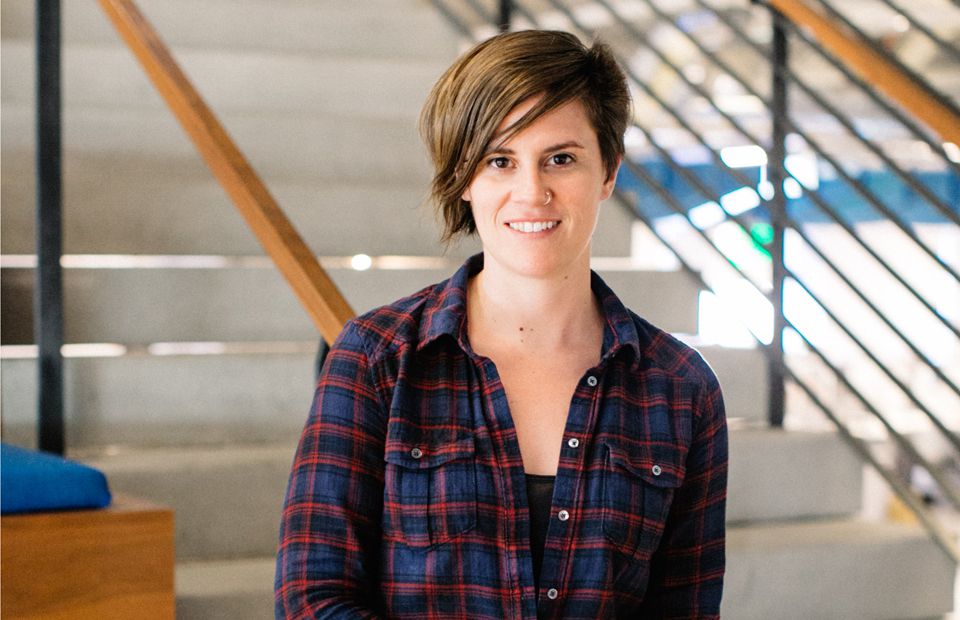
Media
How to Use Positive Reinforcement at Work—and Other Advice from a Pandora PM
"My advice to anyone who wants to get into product management is: check your ego at the door."
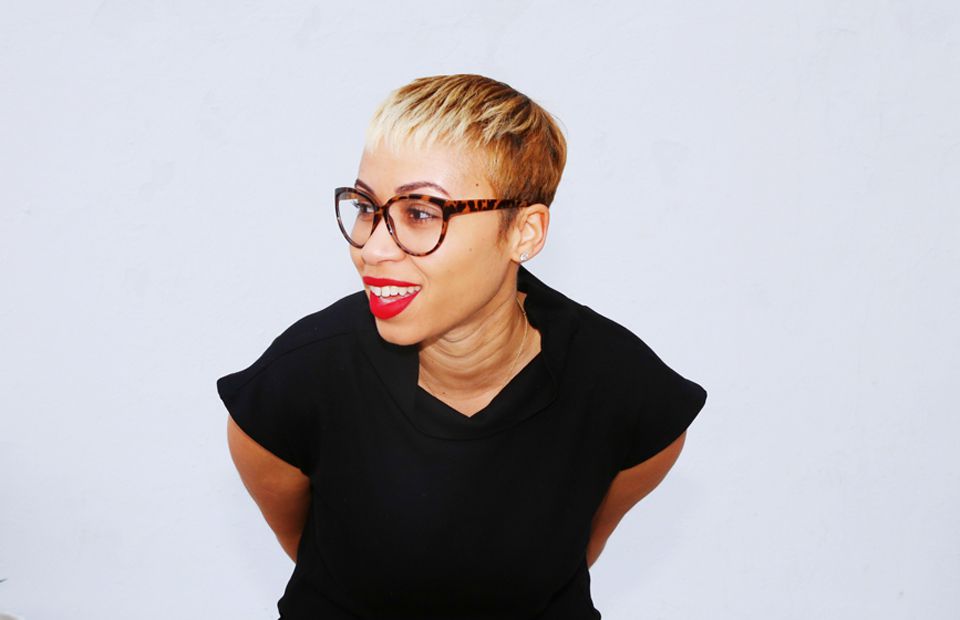
Media, Communications + Public Relations
How to Take Risks, Make a Switch, and Find a Career You Love—From a Woman Who's Done It 4 Times
Making your wildest dreams come true starts with understanding yourself—and Ahyiana Angel can help.
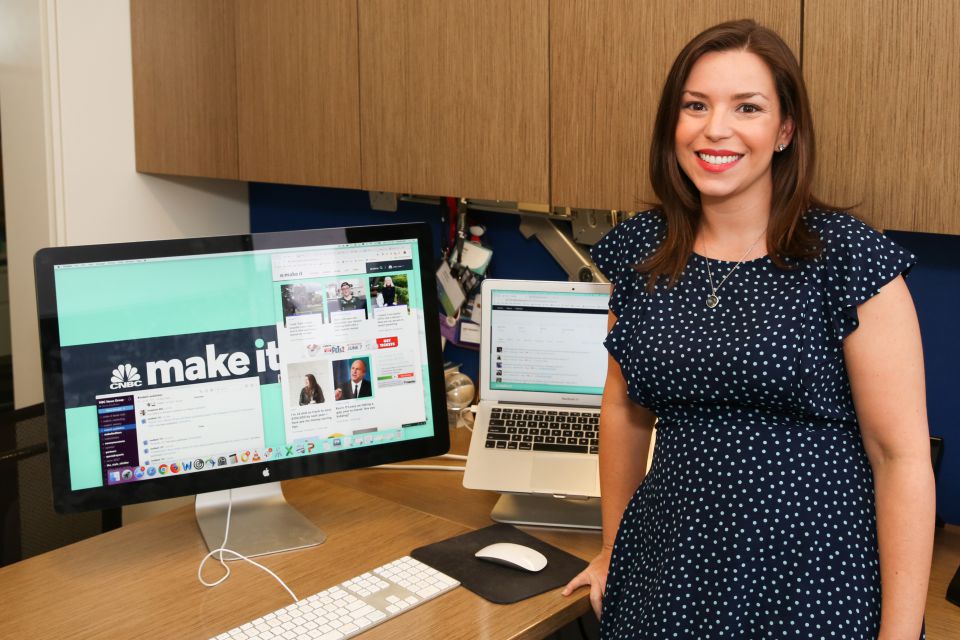
Communications + Public Relations
Creating Content That Empowers Audiences with CNBC's Digital VP and Managing Editor
This week, we interviewed Jenna Goudreau, the VP and managing editor of CNBC Digital. Let's learn how she keeps her powerhouse content creation machine going.
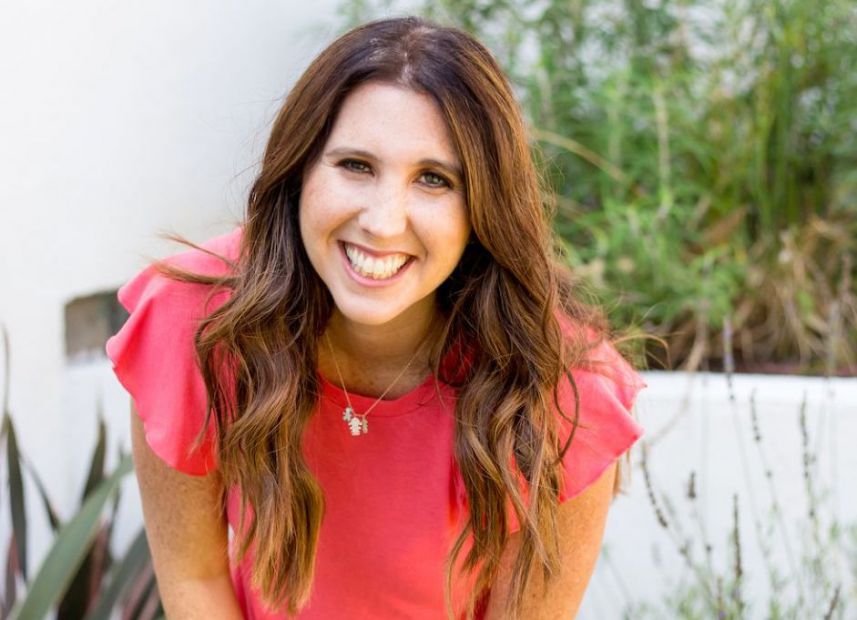
Entertainment
Working Creatively From Home with Cathy Heller
Cathy Heller is a singer, songwriter, entrepreneur, mother—and now, an author. Determined to lift others up to the "happiest versions of themselves," this queen of the hyphenated job title, leads by example. She shared how to build a fulfilling career in a creative field—all while working from home.
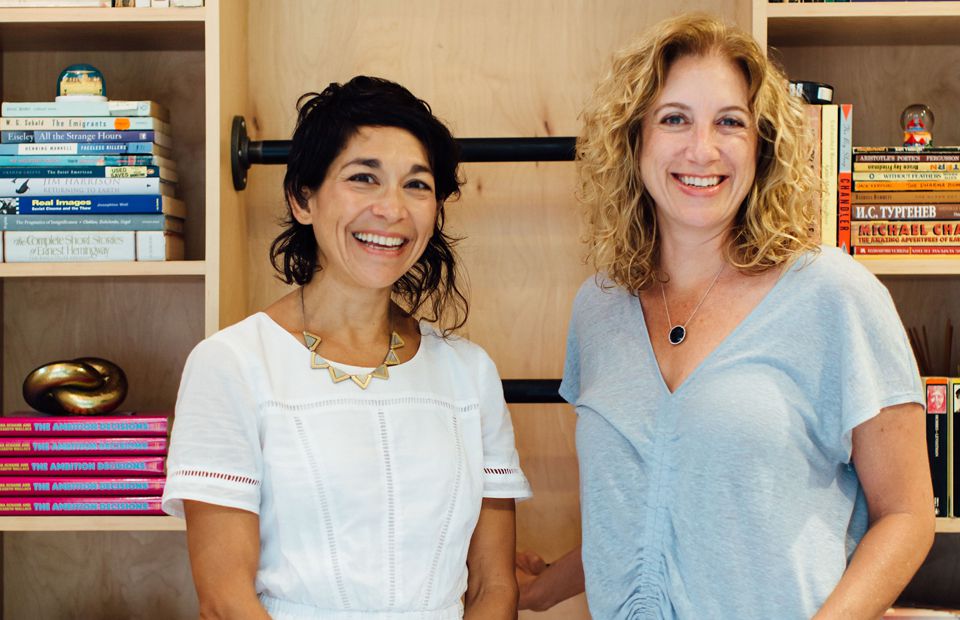
Media
Women, Work, and What It's Like to Write With Your Best Friend—From the Authors of The Ambition Decisions
"We should all give ourselves permission to challenge the things we think can’t be challenged."
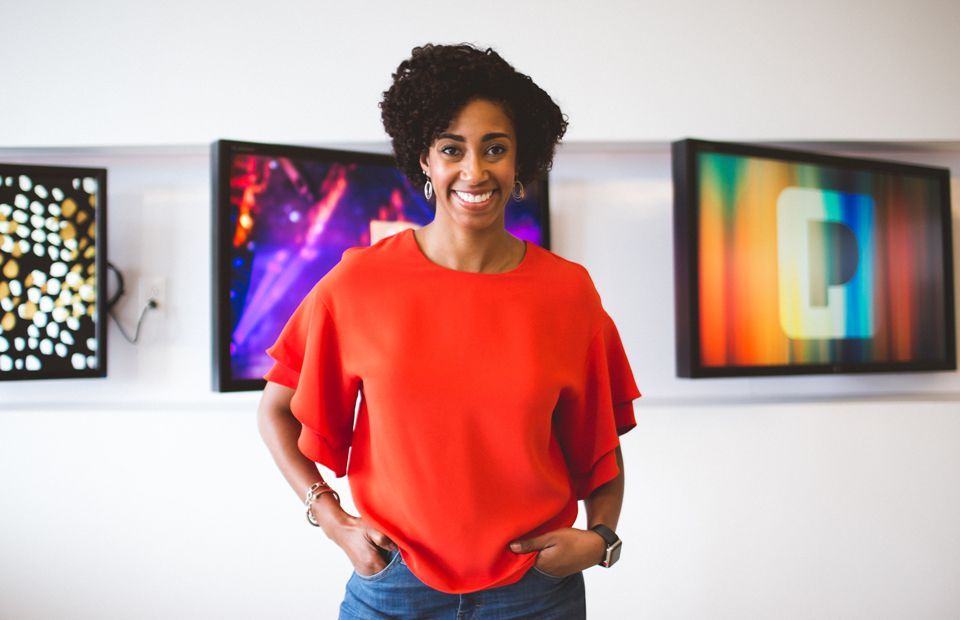
Media
A Director at Pandora on Staying Present, Celebrating Others, and Learning From Failure
"Share your wins, but most importantly, share what your growth areas are, share when you fail, share how you bounced back."
Get the Best Career Advice Delivered To Your Inbox
Join our newsletter to stay in the loop.
